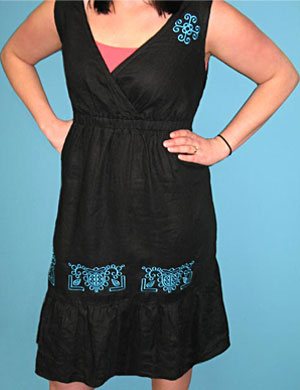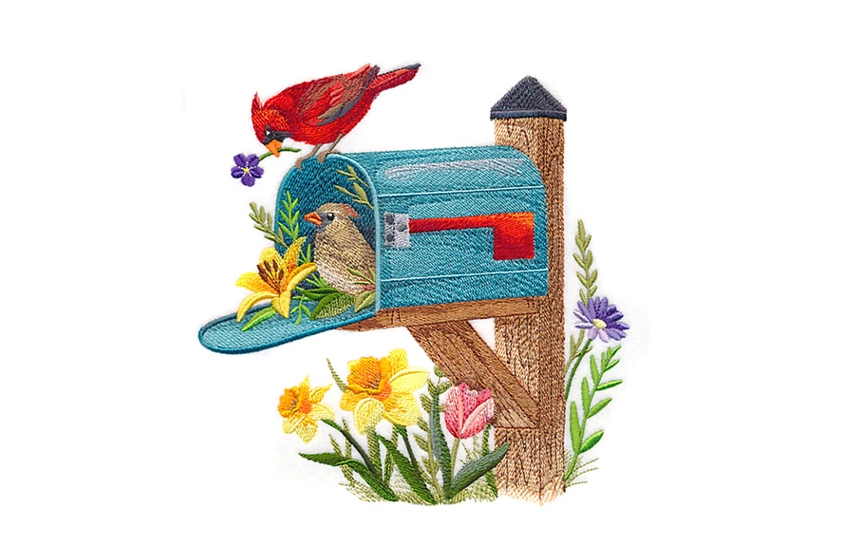Building a dressy-yet-cool wardrobe to wear during summer's hottest, muggiest months can be a real challenge. One word can solve that problem: Linen.
Linen has numerous qualities that makes it a great fabric for summer. It is highly absorbent and quickly wicks perspiration away from the skin. (Okay, sweat. What's that phrase? Men sweat, and woman perspire.) Linen feels cool to the touch, and its stiff nature doesn't cling to the skin, so it can dry quickly.

Made from flax, a plant with lance-shaped leaves and blue flowers, linen is crisp and textured. The feel of linen can vary from stiff and rough, to soft and smooth. Lower-quality linen can have tiny knots, or "slubs," while the finest linen will be slub-free.
Linen is one of the oldest textiles in the world. 4000 years ago in Egypt, linen represented light and purity. It was a valuable commodity, so those that had it were considered to be very wealthy.
It was even used as currency, and also to wrap Egyptian mummies. The Pharaoh of the Exodus, Ramses II, who died 1258 B.C., was discovered in 1881 with his linen wrappings still intact. And yes, that proves that we can take our fabric with us when we die.
Fine linen is made in many parts of the world, from Ireland to Italy to Belgium. Lesser quality linen is currently being bulk produced in Eastern Europe and China.
Linen is a strong, sturdy fabric that includes types such as Venice, Damask, and Butcher's linen. Two to three times the strength of cotton, linen has no elasticity. It is completely biodegradable, allergen-free, and gives protection against UV radiation.

Available in a range of natural colors such as ivory, ecru, tan, and grey, linen is wonderfully lint- and pill-free.
The uses for linen are widespread and include items such as bed and bath fabrics, wallpaper, upholstery, luggage, canvases, and apparel. Interestingly, within the last 30 years there has been a big shift in linen's use for apparel. In the 1970's only 5% of linen was used for fashion fabrics. In the 1990's that number jumped to 70%. I know I certainly contributed to the demand with all of my linen purchases!
When using linen for garments such as loose shirts and pants, boxy jackets, and dresses, take into account the weight of the linen. Tissue-weight linen is great for blouses, while heavy-weight linen is a good choice for pants.
Once you've chosen your linen weight, I would highly recommend pre-washing it for shrinkage and then pressing the material afterwards.
When determining an embroidery design to embellish your linen item, keep in mind the lack of elasticity. An open design pattern usually works best, such as the light and fancy florals I used on the black, linen dress featured far above, or the butterfly designs used by Linda on her placemats and napkins above. Linen is a very strong fabric and can handle complex designs, but the fluidity of the fabric will start to become an issue the heavier the design.
When embroidering, I like to use a 75/11 needle and medium weight cutaway stabilizer. To ensure that the fabric and stabilizer don't move during stitching, use a spray adhesive such as Gunnold KK 100. Spray the stabilizer with the adhesive and smooth the onto the backside of the linen item. You can also use an adhesive-backed or fusible cutaway in lieu of the spray.
To keep my linen items looking good, there are couple of cleaning and ironing techniques that I use. If you like to keep your linen garments crisp and new-looking, dry-cleaning is the best method to achieve that appearance. For softer linen, hand washing or gentle machine cycles with warm water are ideal, and will eventually reduce wrinkling with each wash. The best method for drying linen is air-drying flat on a towel or hanging it from a padded, wooden hanger.
When ironing linen, use a high setting and make sure the garment is damp. Run the iron over the fabric until it is smooth, not dry. Remember, linen dries very quickly.


